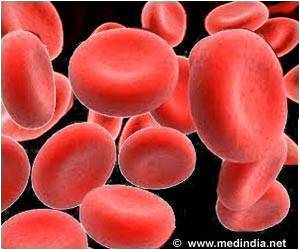At the University of Wisconsin-Madison, researchers have found a new way to accelerate a workhorse instrument that identifies proteins.

Proteins are essential building blocks of biology, used in muscle, brain, blood and hormones. If the genes are the blueprints, the proteins patterned on them are the hammers and tongs of life.
Proteins are not only numerous — humans have more than a 100,000 varieties — but each one has a complex structure that determines its exact function in the biological realm. Just as tissue from cats and kangaroos can be distinguished by studying the individual "letters" of their genetic codes, protein A can be distinguished from protein B by looking at the amino-acid subunits that compose all proteins.
The fastest way to count and identify proteins is to use a mass spectrometer, a precise instrument that measures chemical compounds by mass. "Mass spec is an essential part of modern biology, and most people use it to look at variations in proteins," says Joshua Coon, a professor of chemistry and biomolecular chemistry.
Because mass spectrometers are expensive, and proteins are both numerous and ubiquitous, chemists have recently learned to double up their samples so they can, for example, compare normal tissue to diseased tissue in a single run.
Knowing how the proteins change when good tissue goes bad suggests what has gone wrong.
Advertisement
"Working with John Denu at the Wisconsin Institute for Discovery, we are looking at mice that lived with or without caloric restriction," says Hebert. Caloric restriction is known to increase lifespan in many animals, and scientists are eager to unravel the biochemical pathways that explain this life extension. "Some of these mice have lost a certain gene related to metabolism, so we are comparing four types of tissue all at once. We can look at the brain, liver or heart, and ask, how does the abundance of proteins vary?"
Advertisement
Key to the original doubling-up process was inserting a "tag" into the amino acids that gives the proteins a slightly different mass. The tags are isotopes — chemically identical atoms that have different masses.
To prepare two samples, one would receive an amino acid containing common isotopes, and the other special, heavier isotopes. The result — proteins that are chemically identical but have different masses — can easily be identified in a mass spectrometer.
The new journal report by Coon and Hebert describes a way to use amino acids built from a broader range of isotopes that would be expected to have identical mass, but do not because some of their mass has been converted to energy to hold the atomic nuclei together. Without this energy, the positively charged proteins would repel each other and the atomic nucleus would be destroyed. The tiny loss of mass due to this conversion to binding energy can be detected in the new, ultra-precise mass spectrometers that are now installed in several labs on campus.
The mass difference in the new technique is more than 1,000 times below the mass differences in the existing doubled-up technique, but it is enough to count and identify proteins from six — and, theoretically, 20 — samples at once. The researchers applied for a patent last fall and assigned the rights to the Wisconsin Alumni Research Foundation.
The study of proteins is the forefront of biology, says Coon, and so it's easy to envision uses for a faster, cheaper analytical tool. "We could look for protein differences in cells from 100 different tumors. The proteins might reveal that you are dealing with five or 10 distinct syndromes in this seemingly-identical cancer, which could suggest treatments that are more tailored to the individual. If you compare proteins in normal versus tumor tissue, you might find a certain protein at uncommonly high concentrations, or [that] was modified in certain ways. You might identify a protein that would help diagnose this cancer sooner. Or — and this is the real pay dirt — you might identify a protein that is so vital to the cancer that it would make an ideal target for a new drug."
Source-Eurekalert











